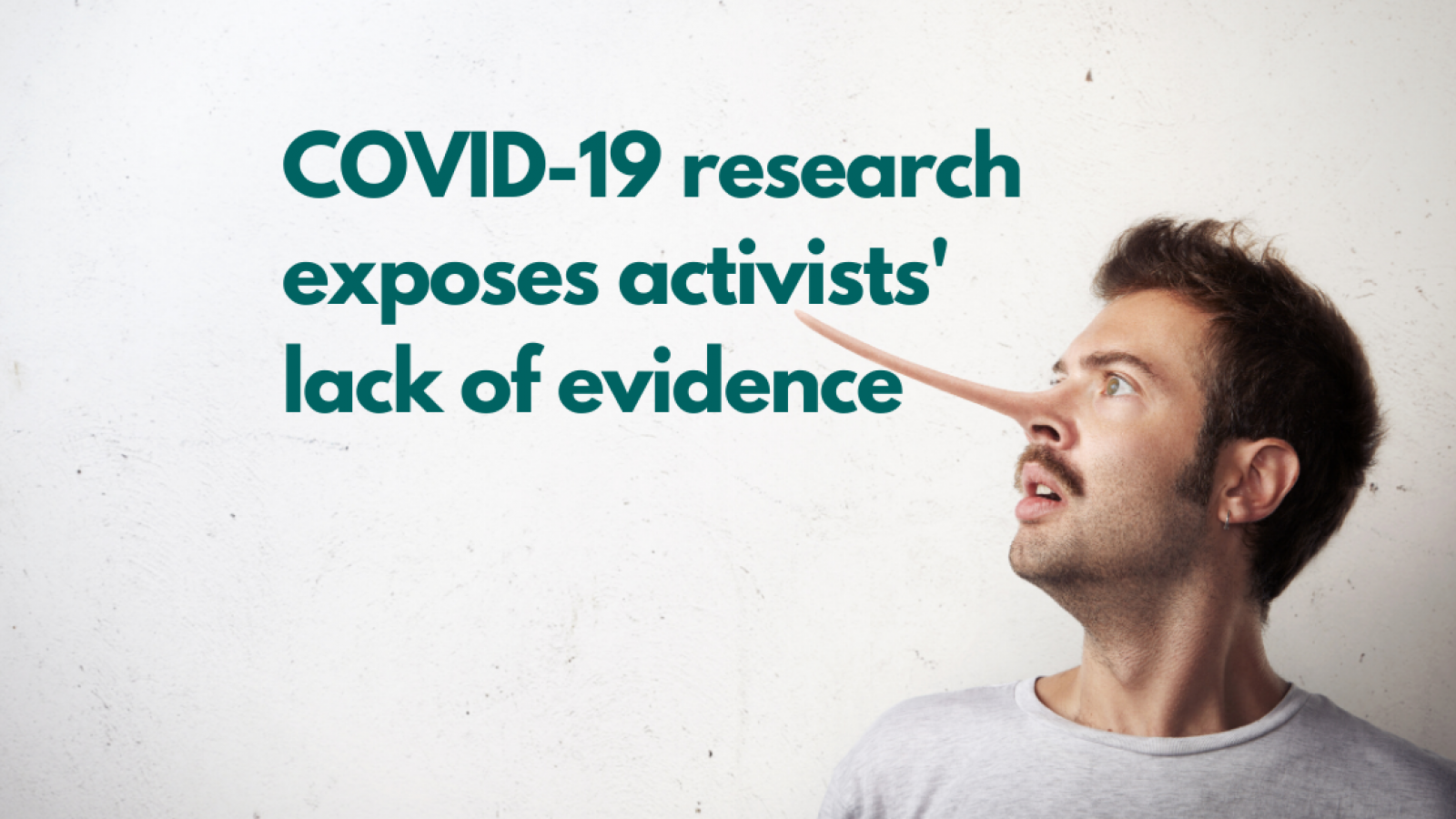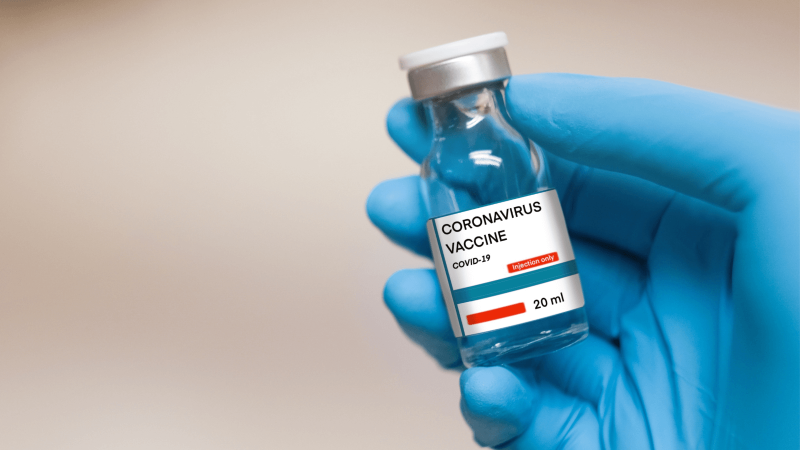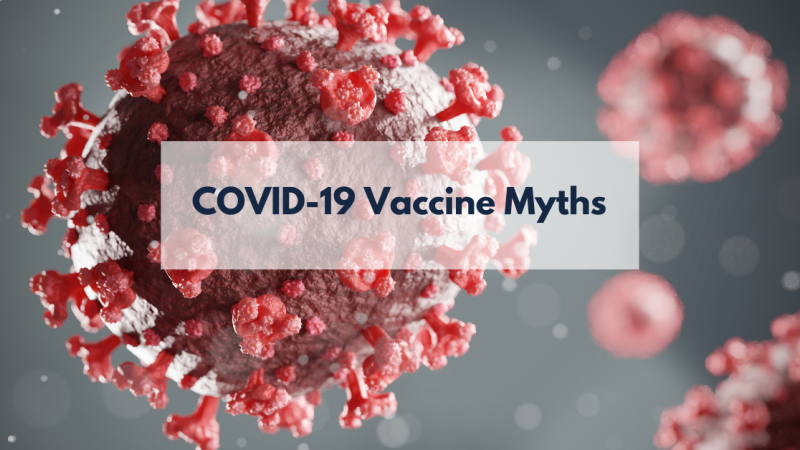
As the media stories around coronavirus mention, time and again, the animal models being used alongside other methods in numerous areas of Covid-19 research, it was at first noticeable that groups opposed to animal research had fallen a bit quiet. We had hoped it may remain that way but, slowly and surely, they are venturing opinion pieces which attempt to square what’s happening in the world with the narrative they like to spin and this, to judge from their writing, isn’t possible without leaving most of the critical information on the cutting room floor.
First out of the traps was PETA, with a quick roundup of research techniques which don’t use animals. This is a list of techniques that, whilst not wrong, is a massively incomplete account of the research going on. In “COVID-19 Researchers Avoid Archaic Tests on Animals”, for instance, there’s a quick rundown of 5 studies, or parts of studies, that happened not to be using animals at the time of writing, but naturally no mention of the 35 that were using animals (it’s now nearly 90) which were covered on animalresearch.info, in the media and elsewhere.
Also incomplete are the quotes they attribute to scientists. As they write, “Dr Stanley Perlman, a coronavirologist at the University of Iowa, notes that infecting mice “doesn’t really tell you much about how the virus causes disease”.
Such a shame that the rest of this quote (which has been lifted from this piece by Nature), is missing. The full attribution from Perlman, a scientist who develops genetically manipulated animal models so that they do model human disease, is:
“Animals that develop only mild infections could be useful for testing drugs and vaccines, but they might not help scientists understand more severe cases, says Perlman. “It doesn’t really tell you much about how the virus causes disease.” He says he will try infecting hACE2 mice — when he can get them — but he’s already thinking about developing other mouse models to better mimic severe cases.”
Peta’s case then, as usual, leans on missing out several absolutely critical details such as the fact the very animal models they are discussing are useful for testing vaccines and the person that they’re quoting both uses animals and is an expert in creating animal models which overcome his perfectly sensible criticism of using a weaker animal model for the job rather than developing another.
Elsewhere, in “Coronavirus Vaccine: NIH Isn’t Waiting for Pointless Animal Tests” the Peta blog reports that a potential vaccine ‘…isn’t waiting for the typical, lengthy animal-testing phase and is instead heading straight for human trials.’ Actually, the animal trials are still taking place, just simultaneously with the human trials instead of before. And some animal research has already happened for this vaccine, as noted in the press release announcing the clinical trial.
As The National Institute of Allergies and Infectious Diseases (NIAID), which developed the vaccine with mRNA specialists Moderna, said on March 18 “NIAID investigators have conducted preclinical immunogenicity testing of mRNA-1273 in mouse models.
These studies show that the vaccine produces a potent antibody response against the COVID-19 virus.” The statement goes on to say “The studies in mice and future studies in nonhuman primates, in addition to the information from the Phase 1 clinical trial, will establish the rationale for testing the vaccine in larger trials if warranted.” Not exactly animal-free what with all the mice and primates there.
Testing in animals for the specific risk of vaccine enhancement, which should establish whether the vaccine is safe to expose larger numbers of people, will proceed simultaneously with human trials of the vaccine. Moreover, the US government will move to larger human studies only once human and animal studies confirm that the vaccine is safe. Trials that show whether a vaccine can prevent infections in people won’t proceed at all without such data from animals.
Animals can also be used to test things which the human tests do not. A human trial, for instance, might tell you if a drug is effective, but what if it also damages internal organs? How should we test for that considering the in vitro methods we currently have don’t outperform animal models?
Elsewhere, Cruelty Free International (CFI) calls for “quick, but humane and human-relevant action”. Leaving aside the fact that ‘human relevant’ surely means anything with a clinical therapeutic value like cancer drugs based on hamster antibodies, this article again relies on a selective reading of the facts.
In common with the PETA article, CFI’s piece repeats the silly myth that “90% of new drugs that appear to be safe and effective in animal tests go on to fail in human trials”, which only sort-of works if you include reasons for the failure to market a drug that have absolutely nothing to do with safety or efficacy.
In essence, most potential medicines fail for practical or commercial reasons, not because the animal test gave duff information. Indeed, that’s exactly what the reference allegedly backing up CFI's statement says, mentioning the word ‘animal’ only once in a 28-page paper on the reasons why potential drugs fail to make it to market. When a third of potential medicines fail to make it to market because a company abandons a drug’s development for business reasons, it’s pretty daft to blame the results of animal tests for the ‘failure’.
It is certainly not true to assert that 90% of new drugs that appear to be safe and effective in animal tests go on to fail in human trials for safety or efficacy reasons – those numbers are closer to 8% and 4% respectively. It’s like saying ‘my nan died after drinking some tea’, when it wasn’t the tea that killed her – she just drank some tea at one point in her life and years later passed away of something completely unrelated. In fact, by that token more than 99% of our nation’s dead Nannas died after drinking tea!
Elsewhere, the Moderna Covid vaccine trial in the US mentioned above by Peta, which has begun human trials after minimal animal studies, is recommended by CFI as the way forward for clinical trials without some important caveats. The first is that there’s a heightened risk to the human volunteers which, whilst justified in a pandemic, would be a risk too far in normal life. The second is that animal trials are being conducted alongside human trials as mentioned above, not done away with. There is of course no mention of a vaccine produced in this way potentially making the patient more susceptible to Covid -19, nor the fact that animal models will in many cases be the only way of flagging up potential side-effects before the vaccine is administered to ever-growing numbers of people.
Blithe statements including “there is good evidence that animal tests do not reliably predict these things”, and “HIV/AIDS vaccine has been sought for more than three decades, with no success, in spite of hundreds of clinical trials of dozens of vaccine types showing promise and success in monkey tests” and “There are way too many genetic and biological differences in the way, many of which affect the immune system” are all referenced by way of flawed papers the CFI article’s own author wrote.
The nadir of this silliness was reached in late March when 100 ‘experts’ in animal research warned that animal research may slow down progress into treatments for Covid-19!
Except, well you’ve guessed it – most of the ‘experts’ weren’t experts at all but campaigners including not just comedian Alexei Sayle but also Alexei Sayle’s wife! The evidence base supporting the claim was a misquoted World Health Organisation report, a couple of the myths quoted in this blog, an omission of the non-animal methods heavily mentioned in their own references and, ah, who cares - it’s another evidence-free fraud. In science, the evidence is the only aspect that counts and the activists clearly don’t have any if they’re chopping up other people’s words to change their meaning.
Nobody should be dogmatic about using animals regardless of any alternative strategies, but neither should anyone be pretending that alternative strategies don’t themselves have significant risks and drawbacks, or denying that animal models are currently the only way of getting some critical data.
Although Covid-19 has brought about no positives commensurate to its costs, it may be a good time to examine how animal alternatives, undertaken alongside animal studies, compare or complement one another. But it’s not time to model our drug safety testing regulations on those applied in a time of crisis, nor time to throw away our most effective tool for answering questions critical to our success and certainly no time to be muddying the water of public debate with incomplete information
The victims of disease have never been hypothetical, but now the victims are people everyone can relate to, en masse – your family, a celebrity, a neighbour - and the ethical questions attending the use of animals to prevent suffering are thrown into sharp relief. It shows that those attempting to falsely discredit animal models are serving a principle of never using animals over the ethical choice of saving millions of lives.
Thankfully, a case built on selective science evaporates as soon as it meets the real evidence currently being considered by governments worldwide, and this suggests that any ‘ethical’ case based on a redacted account of the facts isn’t what most people would consider ethical at all.
Last edited: 9 September 2025 11:37



